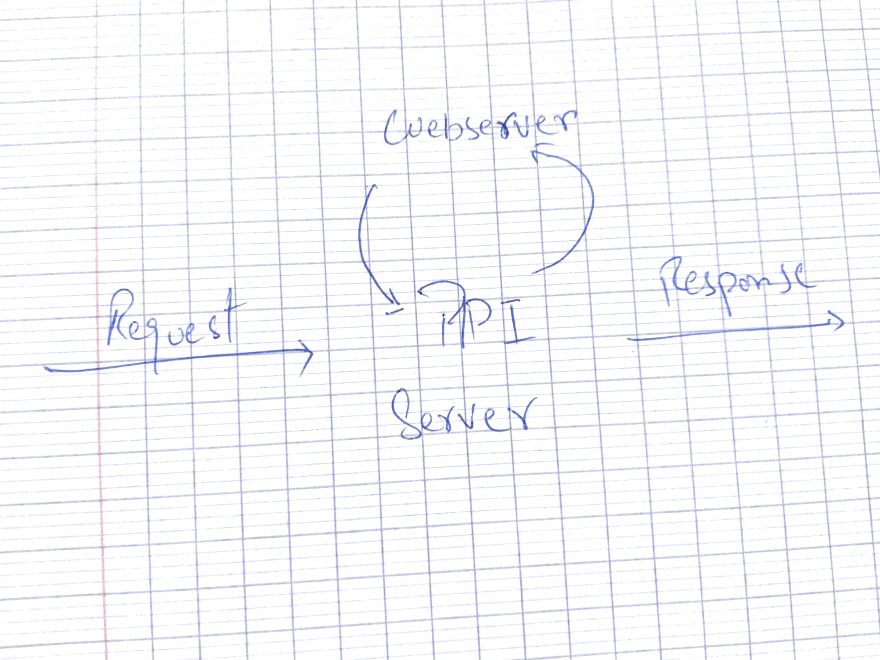Validating Admission Webhooks
Validating Admission Webhooks can be used to intercept requests to the API Server and validate new and updating resources. For example, you could have a Validating Admission Webhook that keeps new Deployment objects from being created if they're missing an application label. You could also keep certain resources from being updated.
- A Validating Admission Webhook has 2 main parts:
- A Webhook Server
- A
ValidatingAdmissionWebhookConfigurationresource
Note: The code examples and a couple passages in this post are borrowed from the Dynamic Admission Control reference. Shared under the Creative Commons Attribution 4.0 International Lisence.
The Webhook Server
The webhook server is just a webserver that handles "validation" requests from the API server.
These requests are regarding specific resource types and object changes. For example, creation of a Deployment resource. This is specified in the ValidatingAdmissionWebhook for the admission webhook.
The webserver communicates with the API Server over HTTPs (TLS) and therefore requires a TLS cert and key pair.
Requests
Webhook Servers a.k.a webhooks, are sent a POST request, with Content-Type: application/json, with an AdmissionReview.Request API object in the admission.k8s.io API group serialized to JSON as the body.
This example shows the abridged data contained in an AdmissionReview object for a request to update the scale subresource of an apps/v1 Deployment:
{
"apiVersion": "admission.k8s.io/v1",
"kind": "AdmissionReview",
"request": {
# Random uid uniquely identifying this admission call
"uid": "705ab4f5-6393-11e8-b7cc-42010a800002",
# Name of the resource being modified
"name": "my-deployment",
# Namespace of the resource being modified, if the resource is namespaced (or is a Namespace object)
"namespace": "my-namespace",
# operation can be CREATE, UPDATE, DELETE, or CONNECT
"operation": "UPDATE",
# object is the new object being admitted.
# It is null for DELETE operations.
"object": {"apiVersion":"autoscaling/v1","kind":"Scale",...},
# oldObject is the existing object.
# It is null for CREATE and CONNECT operations.
"oldObject": {"apiVersion":"autoscaling/v1","kind":"Scale",...},
# dryRun indicates the API request is running in dry run mode and will not be persisted.
# Webhooks with side effects should avoid actuating those side effects when dryRun is true.
# See http://k8s.io/docs/reference/using-api/api-concepts/#make-a-dry-run-request for more details.
}
}
Response
The webhook server responds with a 200 HTTP status code, Content-Type: application/json, and a body containing an AdmissionReview.Response object (in the same version they were sent), with the response stanza populated, serialized to JSON. At a minimum, the response stanza must contain the following fields:
-
uid, copied from therequest.uidsent to the webhook - allowed, either set to
trueorfalse
Example of a minimal response from a webhook to allow a request:
{
"apiVersion": "admission.k8s.io/v1",
"kind": "AdmissionReview",
"response": {
"uid": "<value from request.uid>",
"allowed": true
}
}
Example of a response to forbid a request, customizing the HTTP status code and message:
{
"apiVersion": "admission.k8s.io/v1",
"kind": "AdmissionReview",
"response": {
"uid": "<value from request.uid>",
"allowed": false,
"status": {
"code": 403,
"message": "You cannot do this because it is Tuesday and your name starts with A"
}
}
}
ValidatingWebhookConfiguration
The ValidatingAdmissionWebhookConfiguration specifies what object type and request methods should the webserver be called on. The Configuration resource also specifies the TLS caBundle the API server should use to connect with the webserver.
An example ValidatingWebhookConfiguration:
apiVersion: admissionregistration.k8s.io/v1
kind: ValidatingWebhookConfiguration
metadata:
name: "pod-policy.example.com"
webhooks:
- name: "pod-policy.example.com"
rules:
- apiGroups: [""]
apiVersions: ["v1"]
operations: ["CREATE"]
resources: ["pods"]
scope: "Namespaced"
clientConfig:
service:
namespace: "example-namespace"
name: "example-service"
caBundle: "Ci0tLS0tQk...<
caBundle is a PEM encoded CA bundle which will be used to validate the webhook's server certificate.>...tLS0K"
admissionReviewVersions: ["v1", "v1beta1"]
sideEffects: None
timeoutSeconds: 5
Further Resources
- To learn more about validating admission webhooks and dynamic admission control in general, see the Dynamic Admission Control reference from the Kubernetes docs.
- You can find the definitions of the
AdmissionReviewobject in k8s.io/api repository. - I also like to look at the Kubernetes API reference. You can find the
ValidatingAdmissionConfigurationspec there.







Top comments (0)